Prepare to embark on a wild, whimsical ride through the world of Happy Tree Friends comics! In this unmissable listicle, we’re diving headfirst into 35 of the most uproariously funny, side-splittingly hilarious comics that have ever graced the pages of this cult classic. Known for its adorable characters and unexpectedly dark twists, Happy Tree Friends offers a unique blend of cute and chaotic, and we’ve handpicked the absolute best of the best for your entertainment.
Whether you’re a long-time fan or a curious newcomer, prepare to be astonished, delighted, and thoroughly amused. So buckle up, and let’s explore the zany, unpredictable universe of Happy Tree Friends like never before.
Origin Story
“Happy Tree Friends” began with a simple sketch by Rhode Montijo of a yellow rabbit, which caught the attention of Mondo Media. This simple drawing was the seed that blossomed into the globally recognized series.
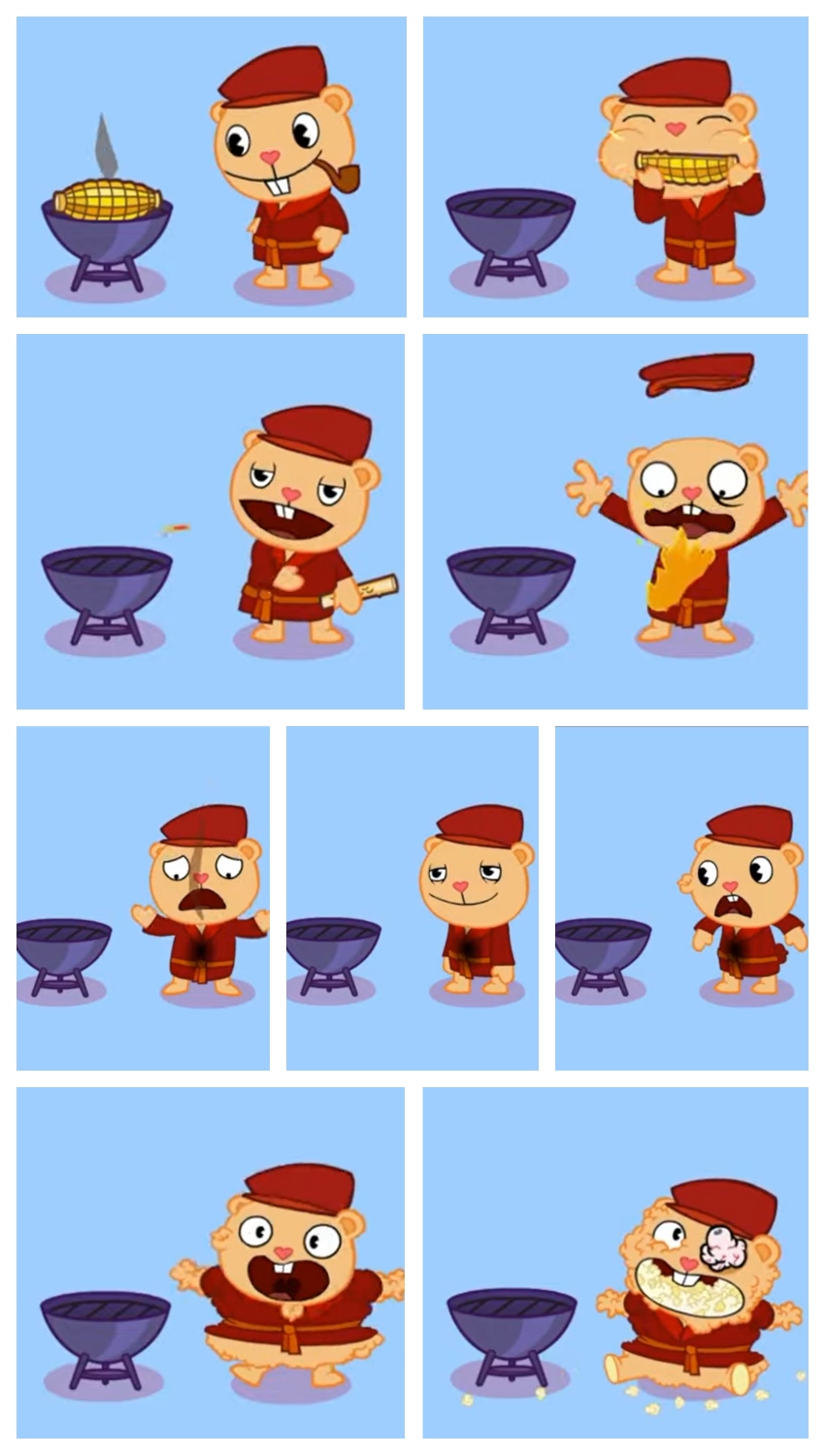
Characterized by its unique blend of adorable characters and unexpected gore, the series quickly diverged from traditional animation paths. Montijo’s initial vision was key to shaping the show’s distinct style, blending innocence with a macabre twist and setting the stage for success.
Internet Phenomenon
After its 1999 internet debut, “Happy Tree Friends” experienced an explosive rise in popularity, quickly amassing over 15 million monthly hits. Its success was driven by its novel approach to animation, combining cute aesthetics with shockingly graphic content.
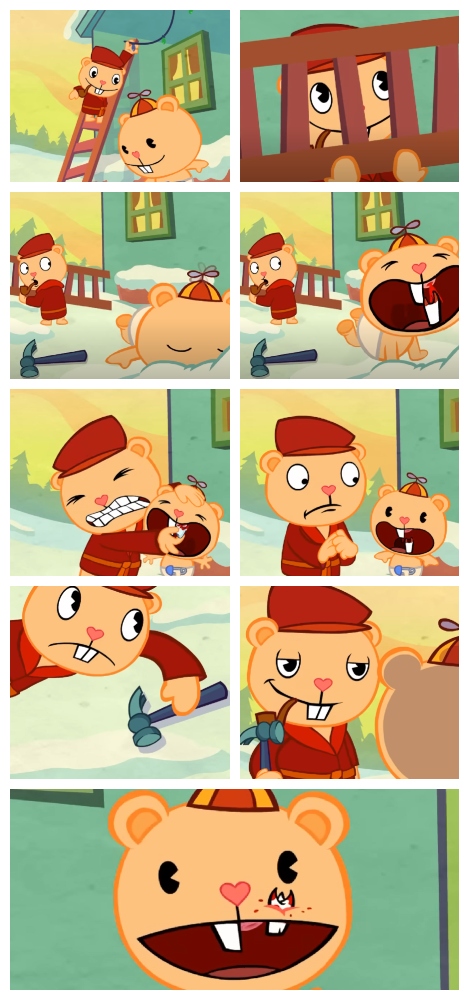
This striking contrast captured the attention of a broad audience, ranging from animation enthusiasts to internet surfers looking for something distinct and edgy. The show’s viral nature was a testament to its unique appeal and the growing power of internet media in shaping entertainment trends.
Kenn Navarro’s Vision
The creative genius behind “Happy Tree Friends,” Kenn Navarro, played a pivotal role in defining the series’ direction. His brilliant animation skills and clear vision for the show were instrumental in its success.
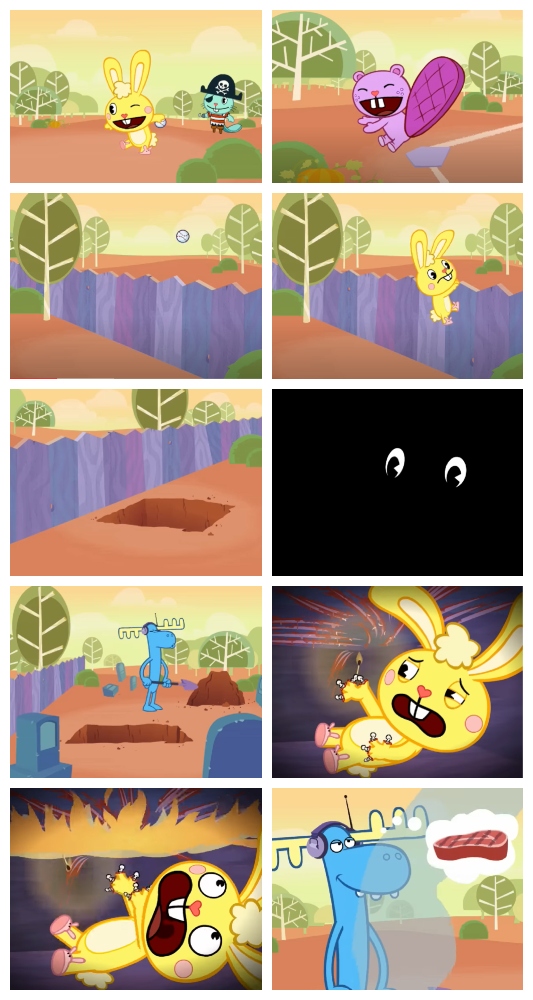
Navarro’s approach to animation, characterized by a blend of humor and horror, resonated with audiences globally. His work on the series is often compared to timeless animations, predicting that “Happy Tree Friends” would continue entertaining viewers for decades, similar to classics like “Tom and Jerry.”
Unrealized Dreams
In 2014, there were plans to expand “Happy Tree Friends” into a feature film, stirring excitement among fans. However, the project encountered obstacles, with Kenn Navarro later revealing a lack of progress beyond initial treatments and script discussions.
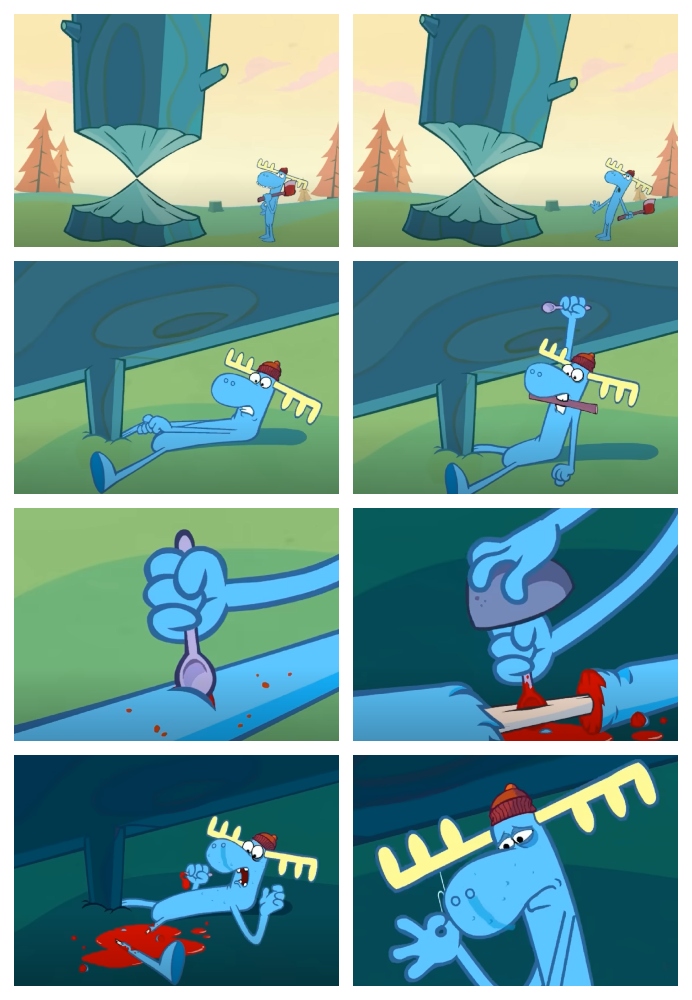
This unfulfilled venture into a full-length film format reflects the challenges of translating short, internet-based series into traditional movie narratives while retaining their original charm and appeal.
Rebirth and Response
December 2016 marked a significant milestone for “Happy Tree Friends” with the release of five new episodes, bundled as “Happy Tree Friends: Still Alive.” This revival offered fans fresh content with bonus material like animated storyboards and writer’s sessions.
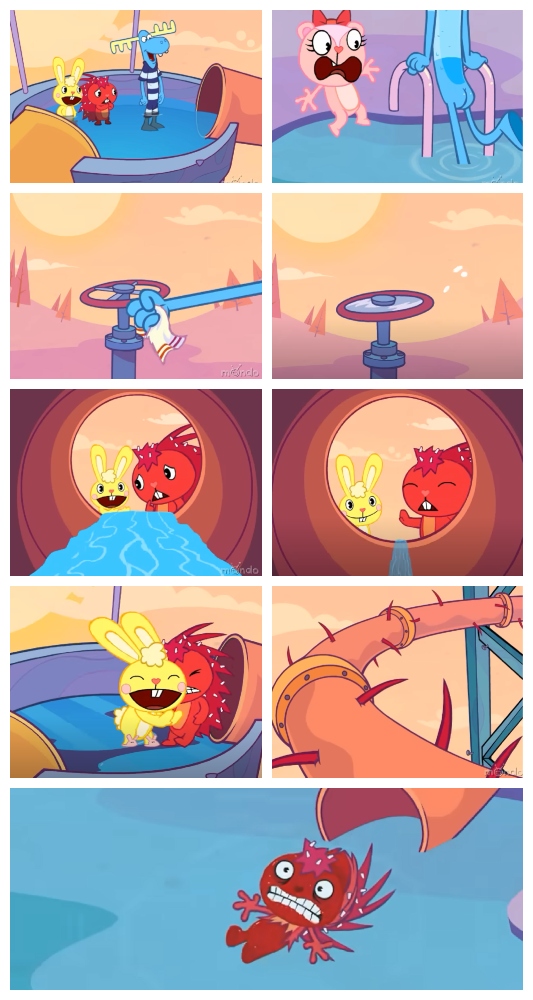
However, the series’ return received a lukewarm response, with sales falling below expectations. This highlighted the challenges faced by web-based series in maintaining momentum and audience interest over time.
Viewer Demographics
“Happy Tree Friends” boasts a diverse audience, unique in its range of age groups and geographic distribution. The series has attracted viewers from different backgrounds, appealing to various segments with its unique style.
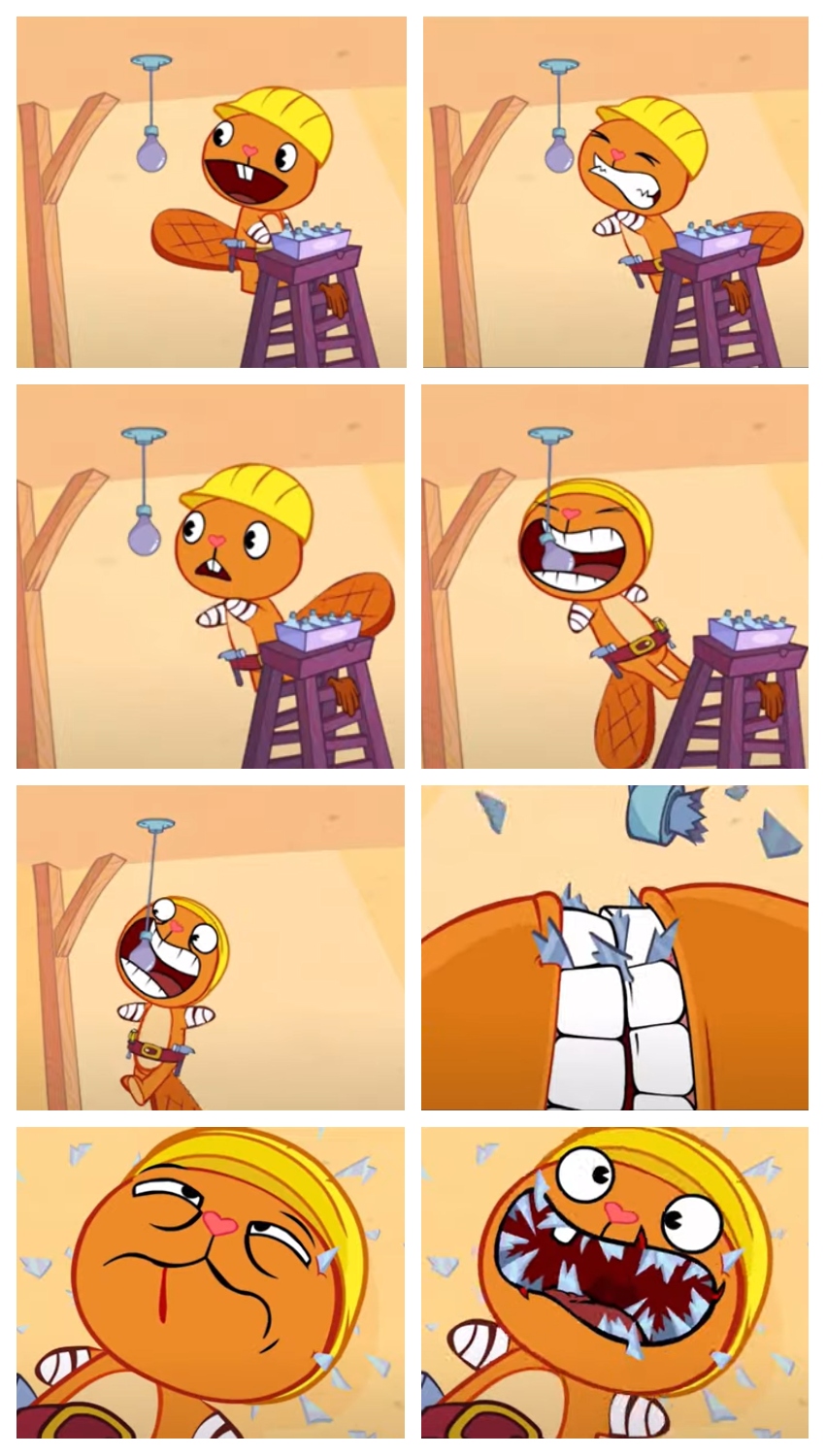
Analyzing the demographics reveals why the show resonates with such a varied audience. This diversity has implications for the content and marketing strategies of the series, influencing how it is tailored and presented to cater to its wide-ranging fan base.
HTF vs. Traditional Children’s Shows
“Happy Tree Friends” presents a storytelling style vastly different from traditional children’s shows. While initially appearing similar to its animated characters, the narrative structure and themes diverge sharply.
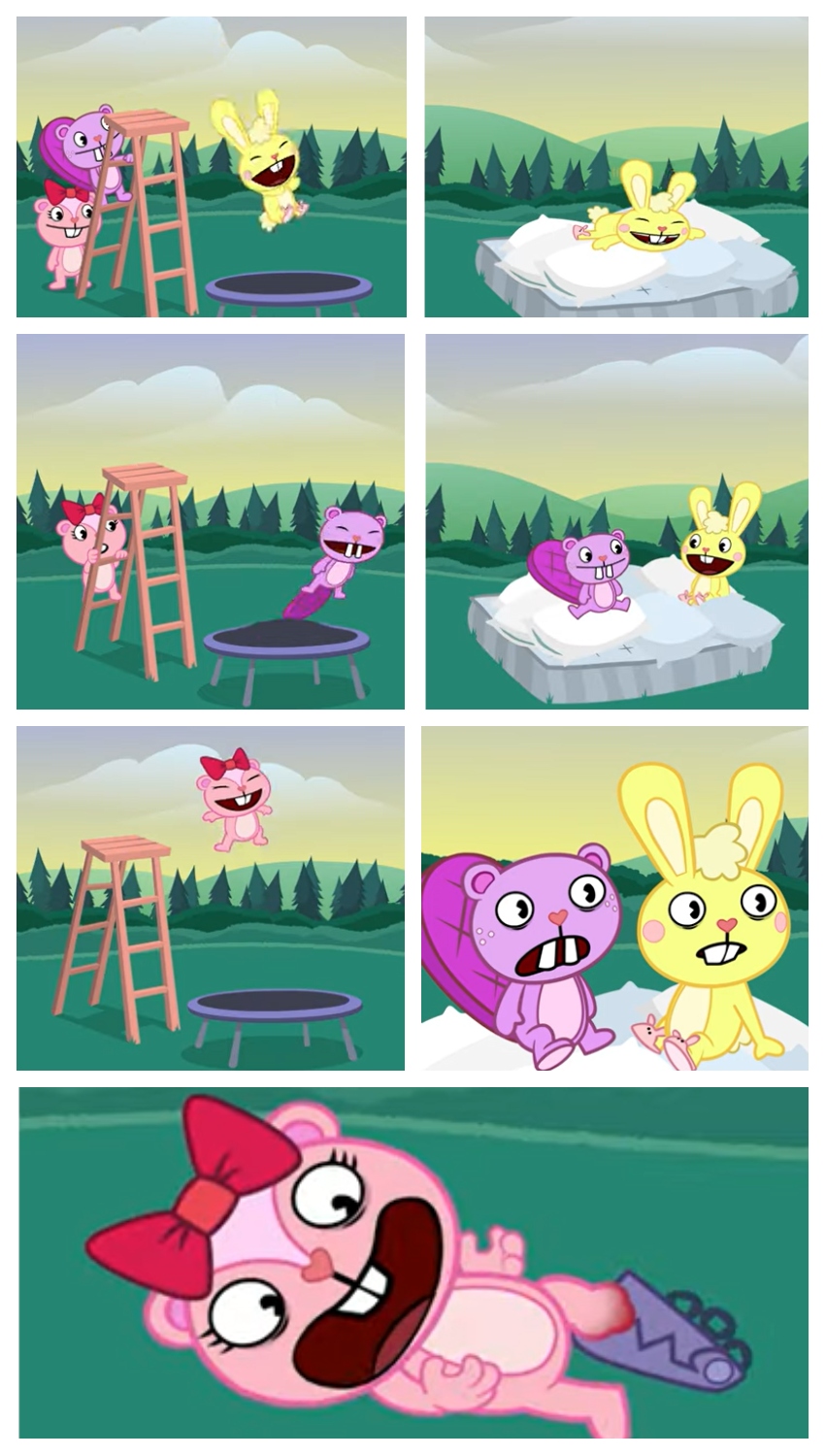
HTF employs unexpected plot twists and mature themes, contrasting typical children’s animations’ more predictable and benign narratives. This contrast is deliberate, as HTF uses its unique style to challenge and comment on the norms of animated content, offering a distinct experience that appeals to an adult audience.
Guest Stars and Collaborations
“Happy Tree Friends” has enriched its episodes with guest stars and collaborations, bringing in external talents to add new dimensions to the show.
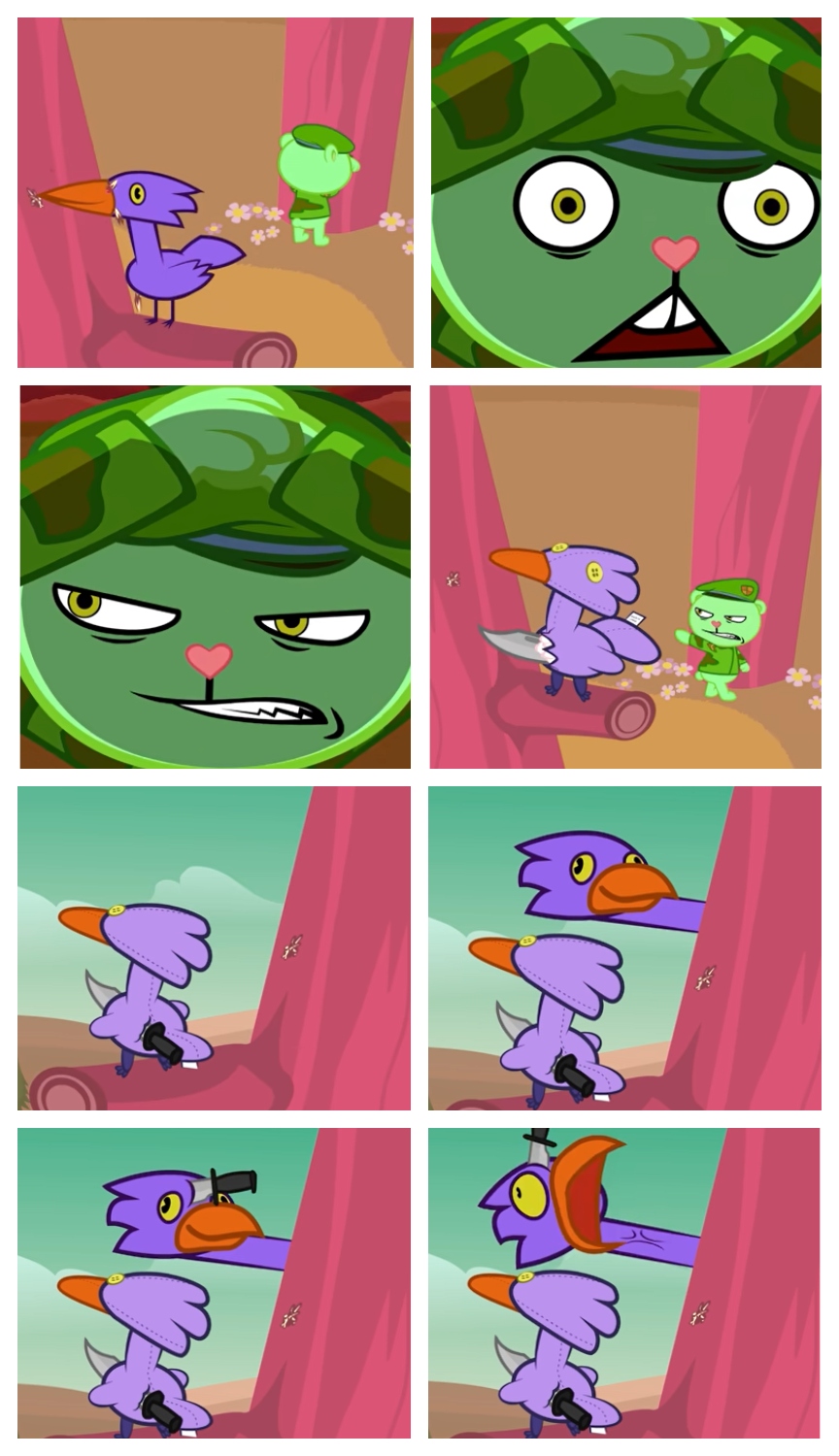
These special appearances have ranged from voice actors to artists, each contributing their unique flair to the series. Integrating these guest contributions has often resulted in memorable episodes, adding to the show’s diversity and appeal. These collaborations highlight the show’s ability to innovate and evolve by including fresh perspectives and talents.
Social Media Presence
The social media presence of “Happy Tree Friends” has been integral to its sustained popularity. The series has effectively utilized platforms like Twitter, Facebook, and Instagram to engage with its audience, share updates, and promote content.
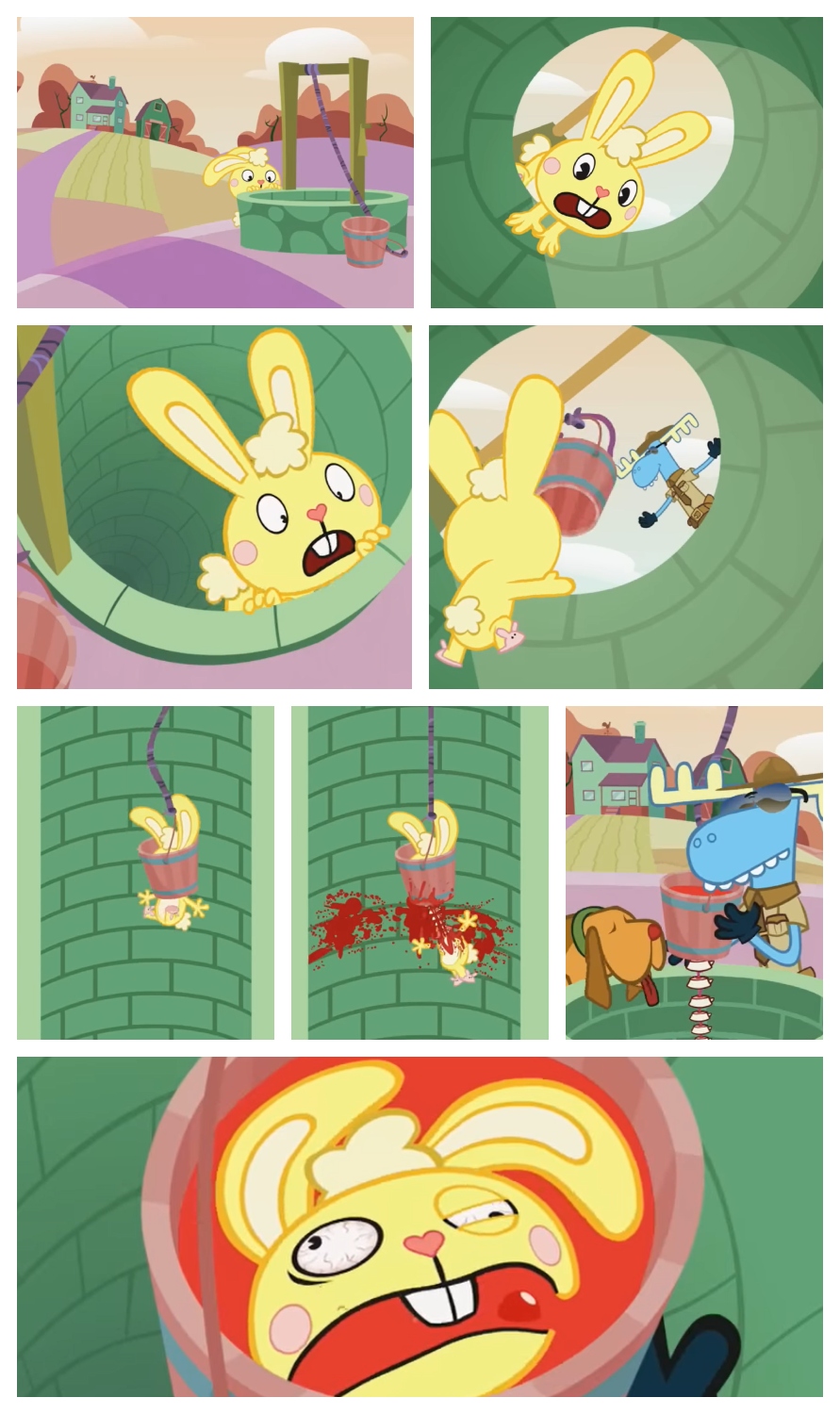
This online engagement has kept the series relevant and fostered a sense of community among fans. The strategic use of social media has enhanced the series’ reach and appeal, keeping it connected with its audience in the ever-evolving digital landscape.
The Creative Minds
“Happy Tree Friends” is the brainchild of a talented team of creators, including Rhode Montijo, Kenn Navarro, and Aubrey Ankrum. These individuals brought diverse skills and perspectives, shaping the series’ unique identity.
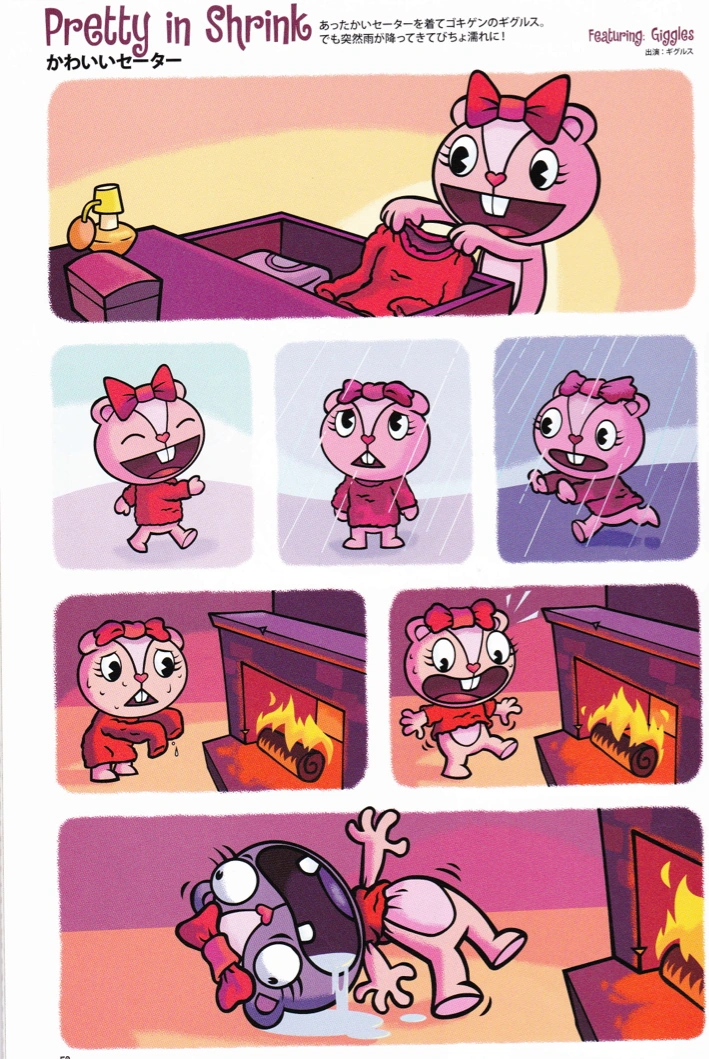
Their collective creativity crafted a show that defied conventions, combining child-like innocence with dark, graphic humor. This item will delve into their backgrounds, roles, and how their collaborative efforts resulted in the creation of this iconic series.
Animation Uniqueness
“Happy Tree Friends” is known for its unique animation style, combining simplicity and a sophisticated edge. The characters, with their child-like cartoon design, starkly contrast the unexpected plot turns in each episode.

This distinct style sets the series apart from others, contributing significantly to its surprise factor and overall appeal. The artistic choices, from character design to animation techniques, play a crucial role in defining the visual charm of the series, making it a memorable and standout show in the world of animation.
Controversial Content
“Happy Tree Friends” has faced its share of controversy, primarily due to its unexpected narrative turns. Critics have often raised concerns about the suitability of these elements, especially considering the show’s seemingly innocent appearance.
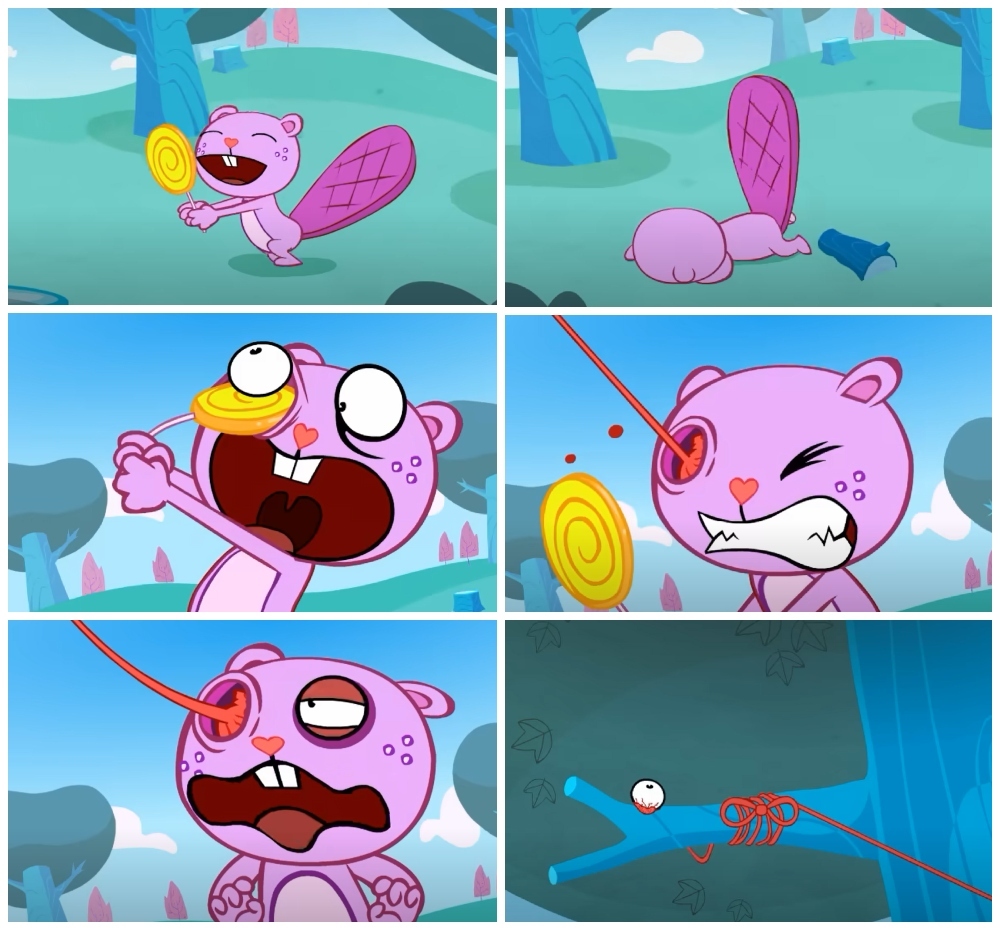
This controversy has sparked debates about the appropriateness and impact of such content in animation. Despite these challenges, the show has maintained popularity, indicating a nuanced reception among its audience and a broader conversation about creative expression in animation.
Merchandise Galore
The appeal of “Happy Tree Friends” extended beyond the screen, leading to a diverse range of merchandise, including DVDs, clothing, and toys. This expansion into commercial products played a significant role in solidifying the series’ cultural presence.
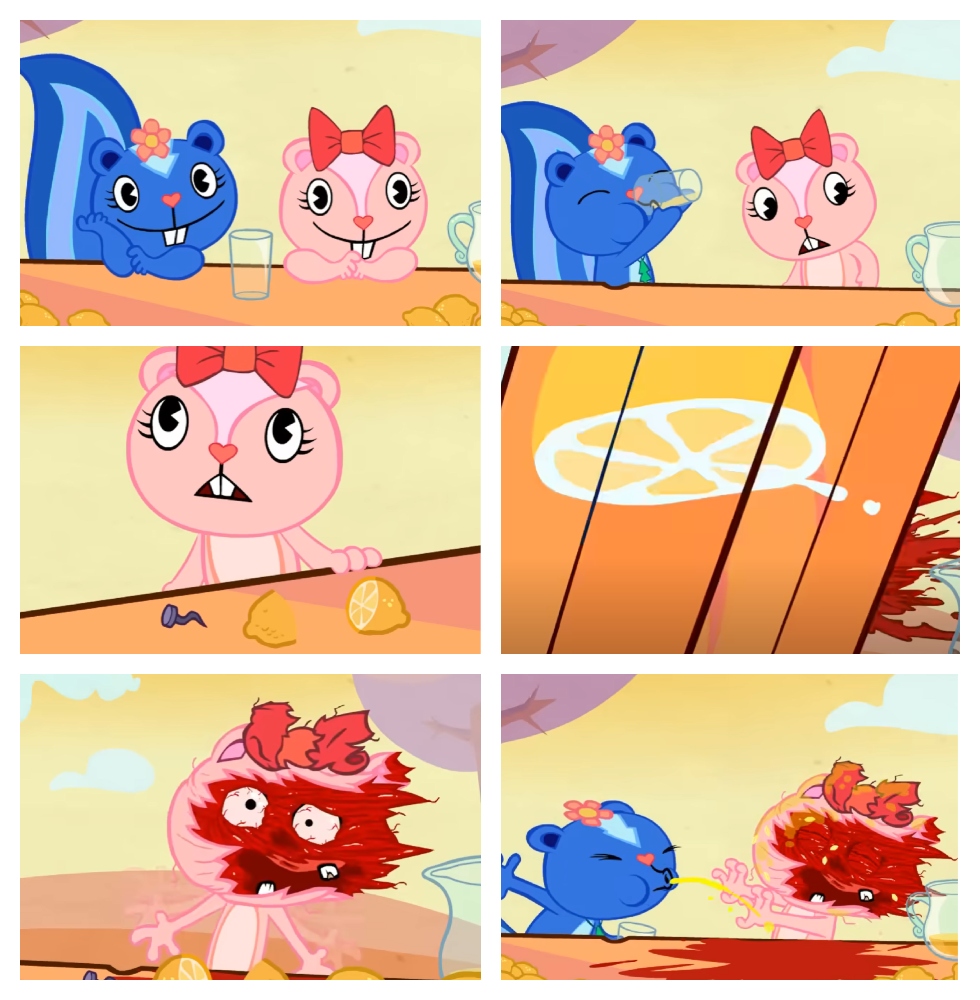
The variety of merchandise available not only catered to the fans but also contributed to the branding and overall perception of the show. The fanbase’s reception of these products underscores its impact and successful transition from a web series to a cultural phenomenon.
Digital Era Pioneers
“Happy Tree Friends” emerged as a pioneer in the digital animation era, effectively utilizing the internet to reach a global audience. The series was at the forefront of exploiting the burgeoning online space, establishing a new entertainment distribution and consumption model.
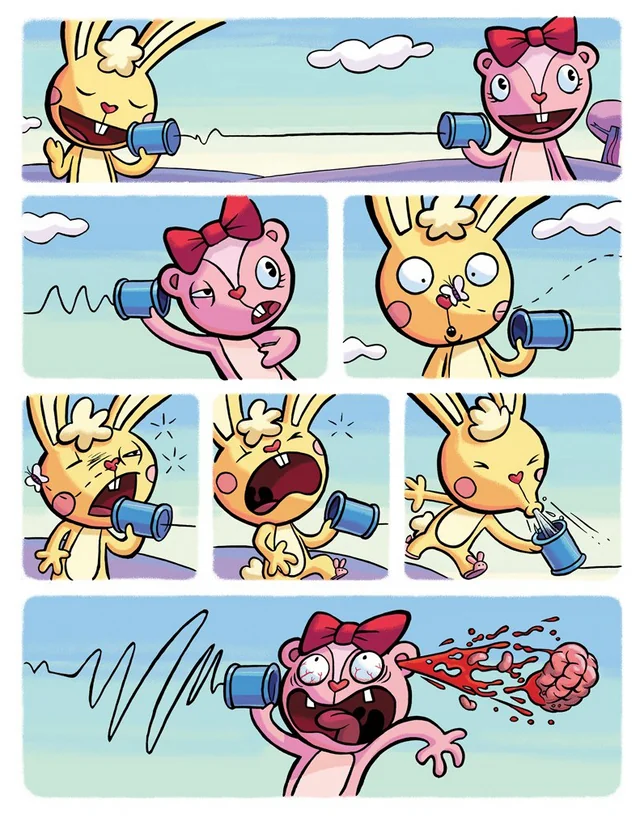
Its success paved the way for future digital content creation, demonstrating the potential of the internet as a platform for innovative and engaging animation. The series’ online success story is a testament to the changing landscape of media consumption and content creation in the digital age.
Censorship Battles
“Happy Tree Friends” has encountered censorship in various countries, reflecting the tension between creative freedom and societal norms. These instances of censorship highlight the challenges content creators face in balancing artistic expression with public sensibilities.
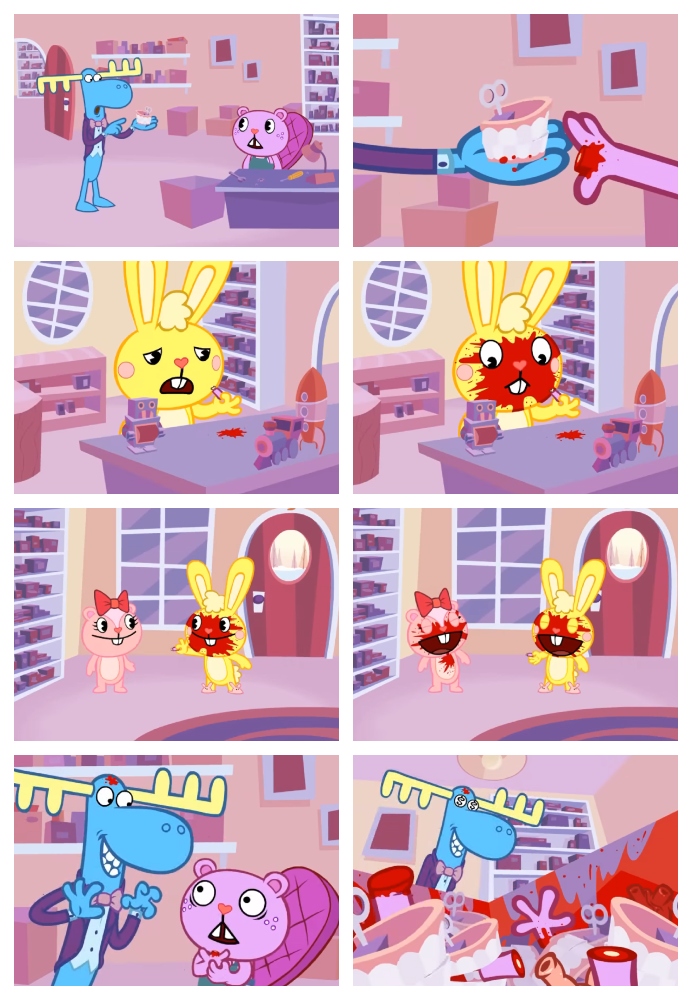
The series’ response to these challenges sheds light on the complexities of media regulation and the ongoing debate over content standards. Despite these hurdles, “Happy Tree Friends” continued to find ways to reach its audience, underscoring the resilience and adaptability of creative content in the face of regulatory challenges.
Parodies and Pop Culture
“Happy Tree Friends” has left a significant imprint on pop culture, inspiring parodies and references across various media. The show’s unique mix of charming characters and startling storylines has been mimicked and spoofed in everything from other television shows to online content.
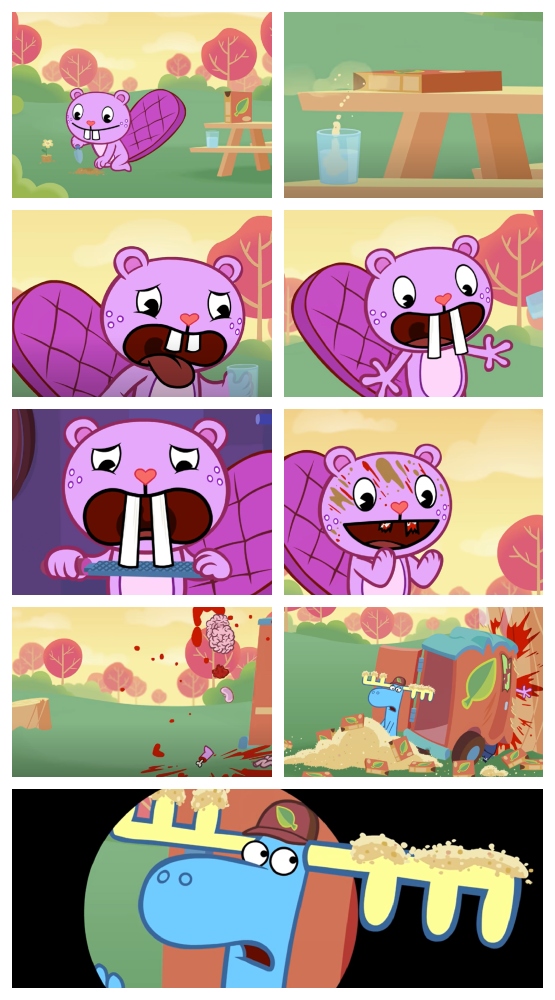
This influence highlights its status as a cultural icon, transcending its original format and shaping broader conversations about animation and humor. The series has become a benchmark for its distinctive style, often cited and referenced in discussions about creative storytelling and blending different genres in entertainment.
Voices Behind the Violence
The voice actors in “Happy Tree Friends” bring its animated characters to life with their distinctive performances. Their ability to infuse personalities into the characters is crucial to the show’s appeal. These talented individuals, with diverse backgrounds in voice acting, bring a unique flair to their roles.
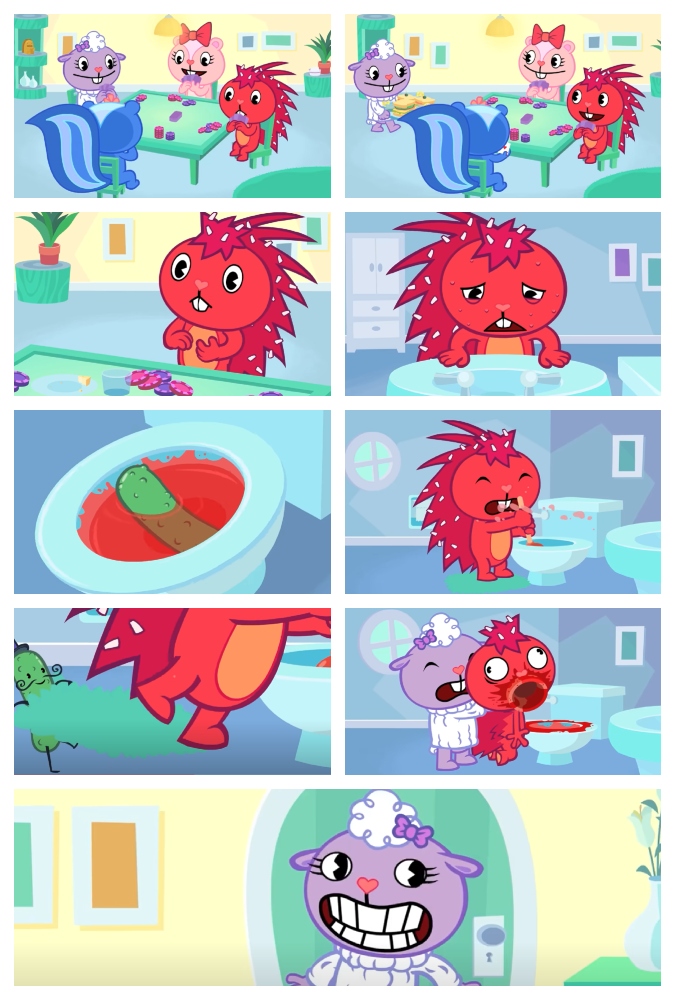
Their performances have been pivotal in defining the show’s character dynamics and overall tone. This aspect of the series underlines the importance of voice acting in animation, demonstrating how vocal performances can enhance the storytelling and character development in a show where the visuals are usually the primary focus.
Critical Eye
“Happy Tree Friends” has sparked a broad spectrum of reactions, from acclaim to criticism. The series’ unconventional approach, combining humor with surprising narrative elements, has been the subject of varied critical reviews. This wide range of responses underlines the divisive nature of the show, reflecting its unique position in the animated landscape.
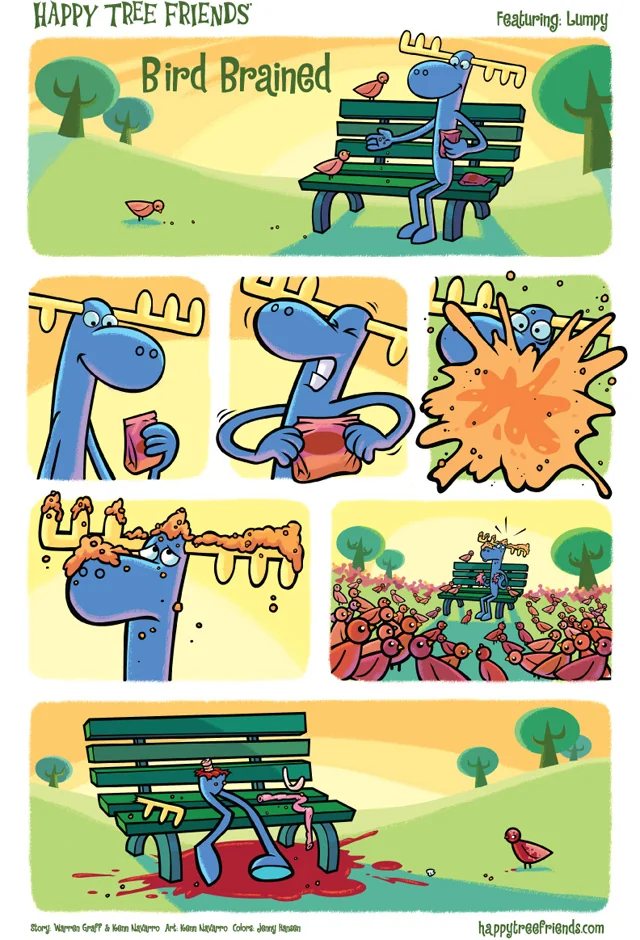
Critics have praised its inventive storytelling and criticized it for the same reasons, showcasing the challenges and opportunities in creating content that pushes the boundaries of traditional animation.
Film Festival Frenzy
Including “Happy Tree Friends” in film festivals has been a significant aspect of its history. These festival screenings have introduced the series to a new audience and broadened its appeal beyond its original online fan base.
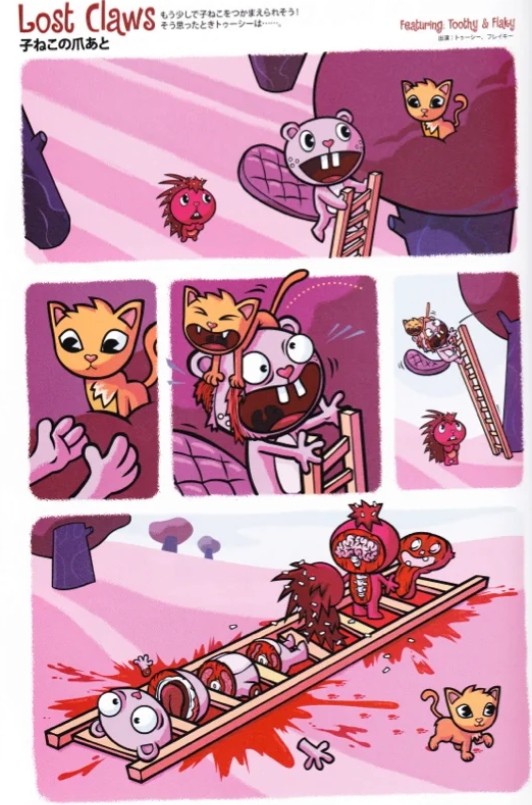
The reactions at these events, ranging from surprise to admiration, have contributed to the series’ reputation and helped it gain recognition in the more traditional film community. These festival appearances underscore the series’ versatility and ability to engage audiences across different platforms and settings.
Dark Humor Dissected
The dark humor in “Happy Tree Friends” plays a crucial role in its appeal. This style of humor, which combines macabre elements with comedic timing, attracts audiences for its unexpectedness and the juxtaposition of contrasting themes.
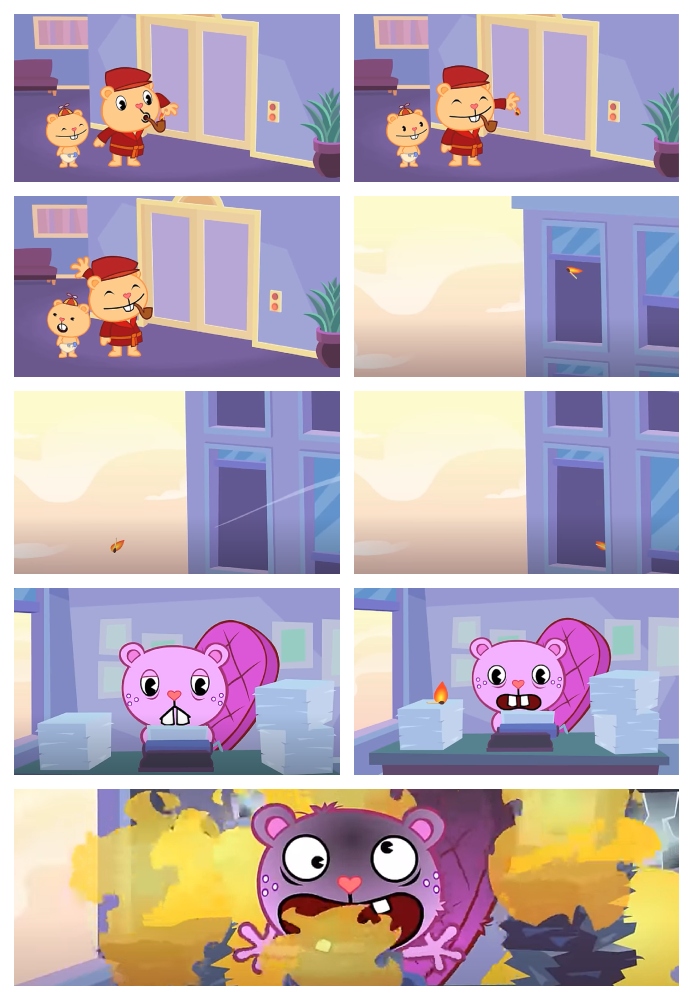
The psychological draw of this type of humor lies in its ability to surprise and entertain viewers simultaneously, providing a unique viewing experience. The series’ use of dark humor is a key factor in its lasting popularity, offering insights into how storytelling can be entertaining and thought-provoking.
Storytelling Techniques
“Happy Tree Friends” is renowned for its unique storytelling approach, characterized by its build-up from mundane scenarios to chaotic climaxes. This narrative style keeps the audience engaged and constantly guessing about the outcomes of each episode.
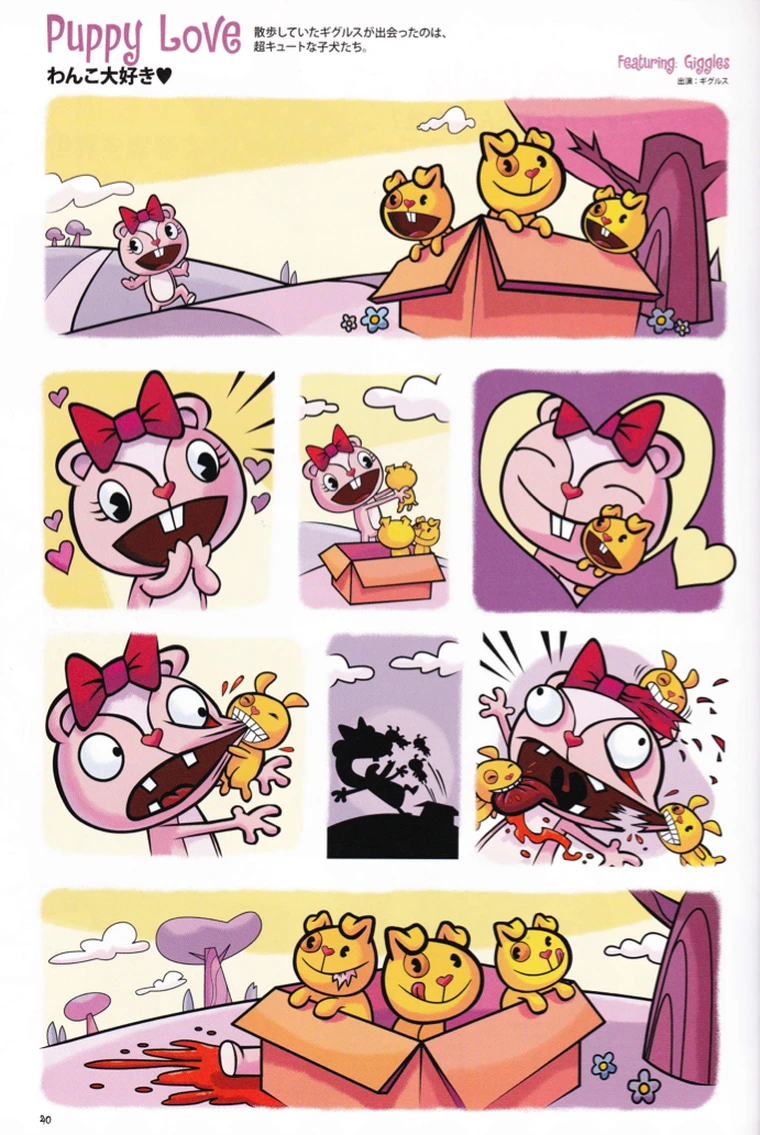
The series skillfully uses this formula to captivate viewers, blending predictability with surprise. The creativity and planning behind each episode’s storyline highlight the series’ mastery in crafting engaging and dynamic narratives, showcasing the innovative techniques used to maintain viewer interest and anticipation.
Cult Following
“Happy Tree Friends” garnered a dedicated fan base drawn to its unique blend of cute animation and graphic content. These fans have played a crucial role in the series’ enduring popularity, creating fan art, discussion forums, and social media communities.

This cult following highlights the series’ impact and resonance with a segment of the audience that appreciates its unconventional approach to animation and storytelling.
Character Development
In “Happy Tree Friends,” characters showcase an evolving nature despite the show’s episodic format. Each character undergoes subtle changes over time, adding depth to their personalities. The series demonstrates a unique approach to character development, where individual quirks and interactions contribute significantly to the narrative.
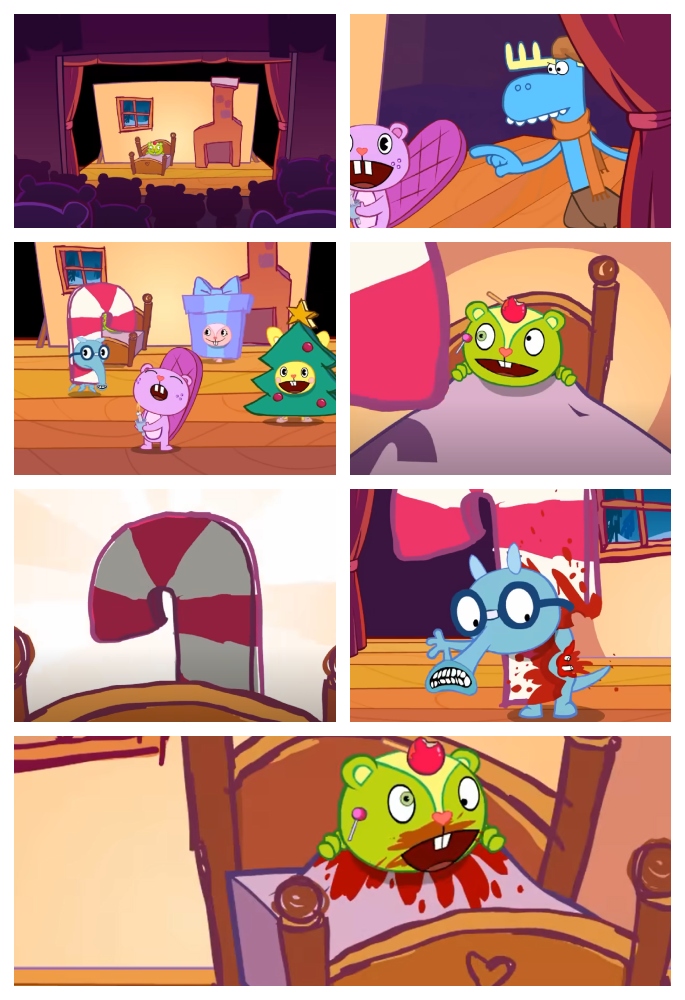
This evolution is noteworthy given the show’s style, where characters often reset in each episode. The series skillfully portrays the complexity of its characters, offering viewers a glimpse into their evolving dynamics and making each character distinct and memorable.
Spin-offs and Related Media
The universe of “Happy Tree Friends” has grown beyond the original series through various spin-offs and related media. These extensions, including mini-series and web spin-offs, have broadened the scope of the HTF world.
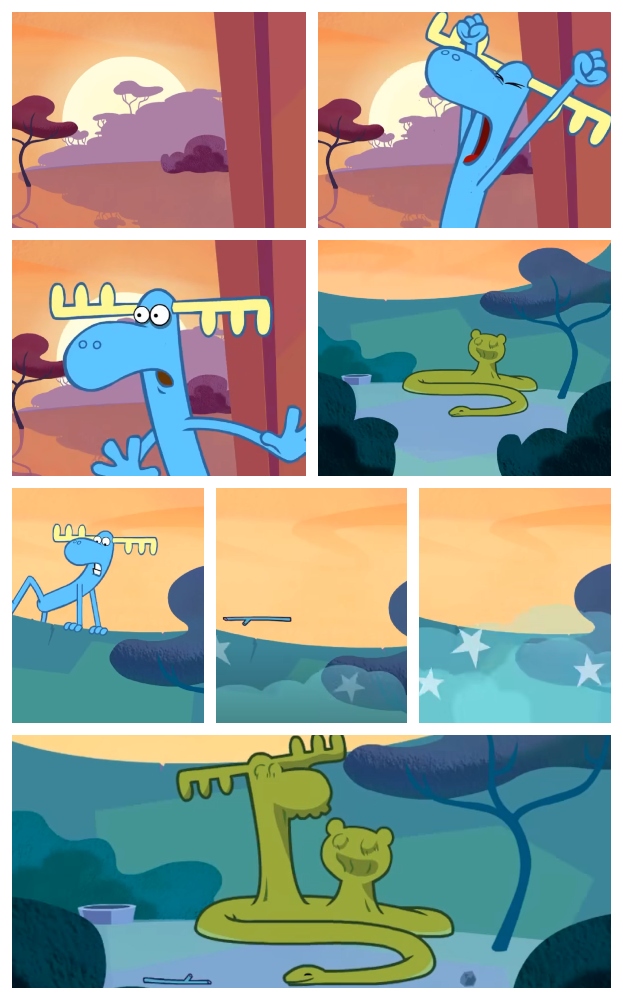
They introduce new characters and explore different aspects of the series, enriching the overall narrative. This expansion showcases the versatility of the HTF brand and its ability to adapt to different media formats, engaging audiences in diverse and innovative ways.
Fan Theories
The passionate fan base of “Happy Tree Friends” has given rise to numerous fan theories and interpretations. These theories range from speculative narratives to complex explanations of the series’ events. Fans engage deeply with the content, creating their own stories and discussions around the series.
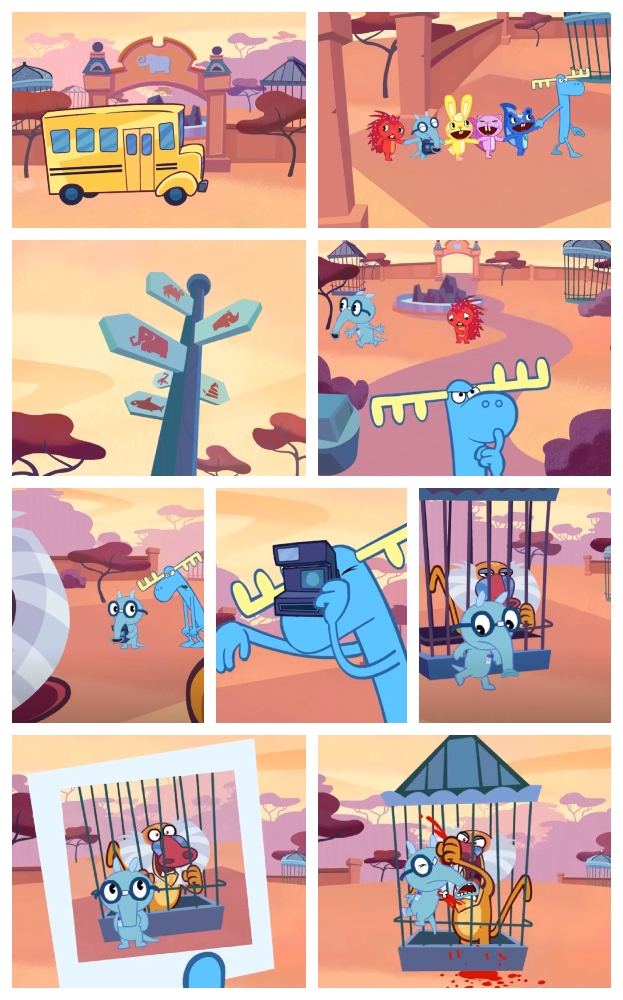
This engagement highlights the show’s ability to inspire creativity and provoke thought among its viewers, turning passive watching into an interactive experience.
Cultural Impact
“Happy Tree Friends” has significantly influenced the animation industry, particularly in the realm of adult-oriented cartoons. The series challenged traditional perceptions of animated content, pushing the boundaries of what is acceptable and expected in animation.
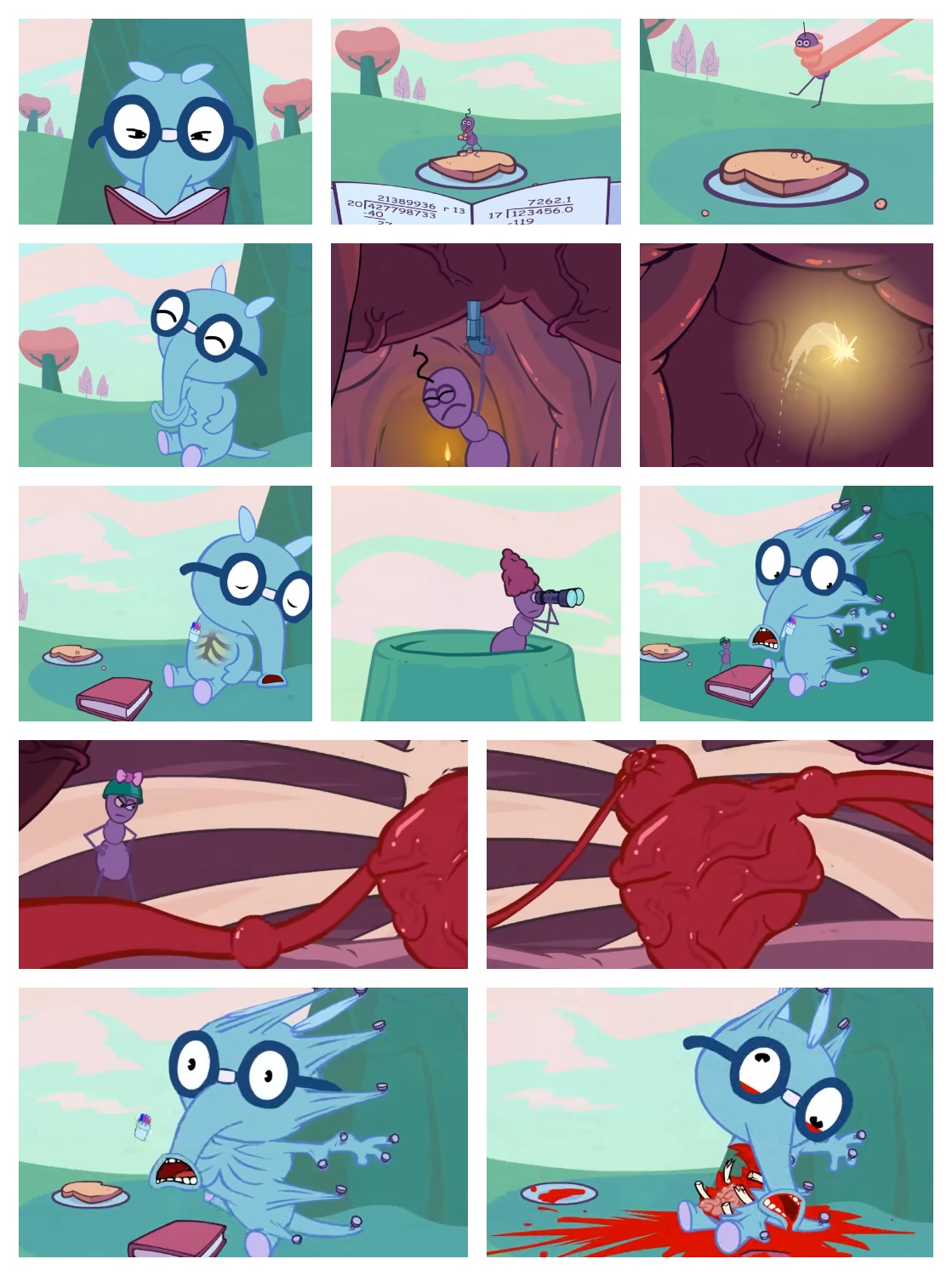
Its impact is seen in how it influenced other animated series, contributing to the evolution of adult animation. The show’s legacy in animation history is marked by its daring approach and the discussions it sparked about the role and scope of animation in entertainment.
Online Communities
The online presence of “Happy Tree Friends” has been crucial in cultivating a global fanbase. Online platforms and communities have played a key role, providing spaces for fans to connect, share content, and discuss the series.
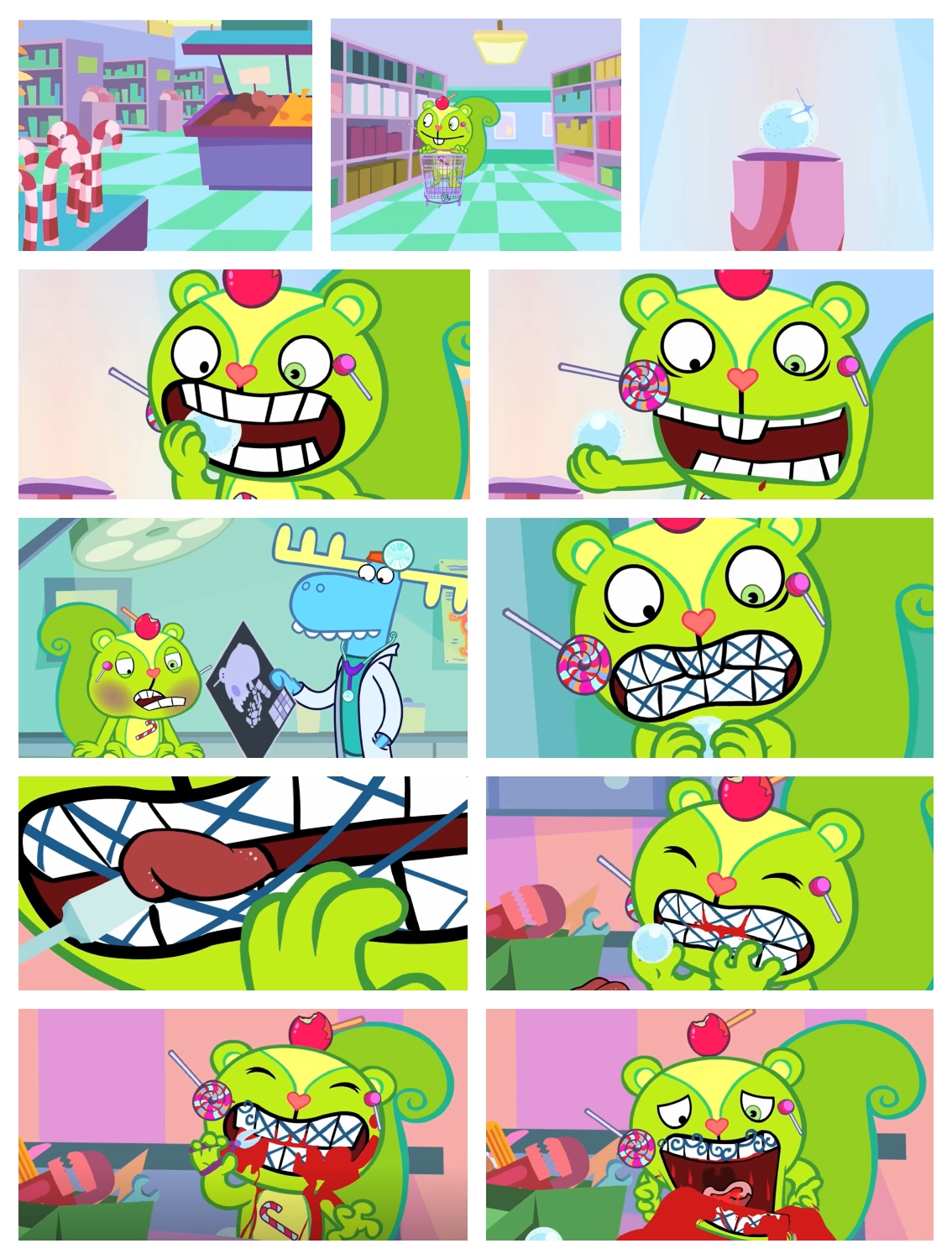
Viewers worldwide have expressed their enthusiasm for the show through forums, social media, and fan sites, creating a vibrant and engaged community. This digital engagement underscores the importance of online platforms in maintaining and expanding the popularity of modern shows.
Mondo Media’s Strategic Role
Mondo Media, the production company behind “Happy Tree Friends,” has been instrumental in the series’ success. Their strategic approach in promoting and distributing the show has significantly shaped its trajectory. Mondo Media’s involvement in the creative process and adept handling of different platforms and formats has broadened the series’ reach and impact.
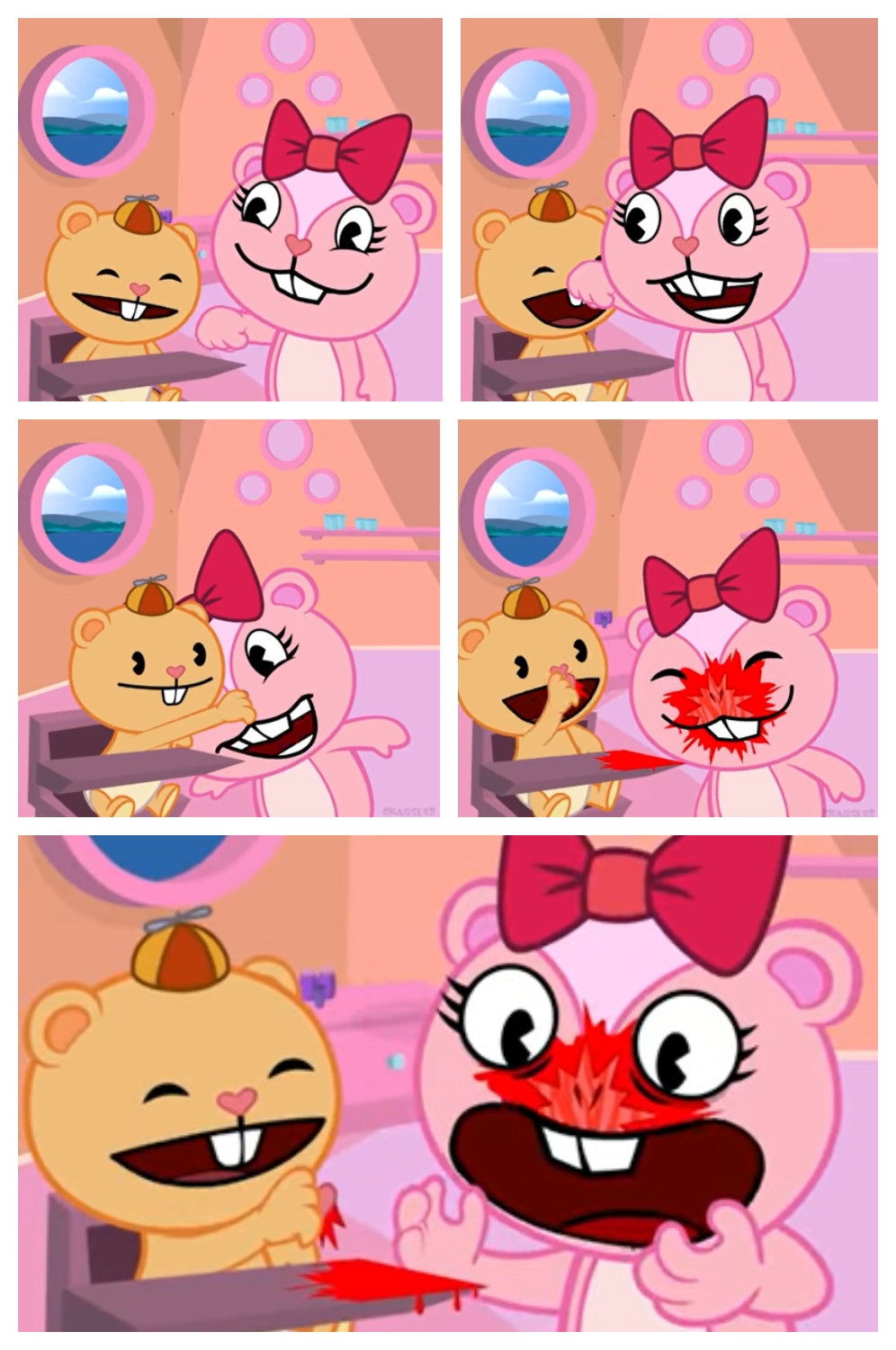
The company’s role highlights the importance of strategic planning and marketing in the success of an animated series, demonstrating how a production company can be a driving force behind a show’s development and popularity.
Series Hiatuses and Returns
“Happy Tree Friends” has experienced several hiatuses, each leading to significant comebacks. These breaks were due to various reasons, including creative pauses and production decisions. Each return brought renewed interest and sometimes changes to the series, reflecting the show’s and its creators’ adaptability.
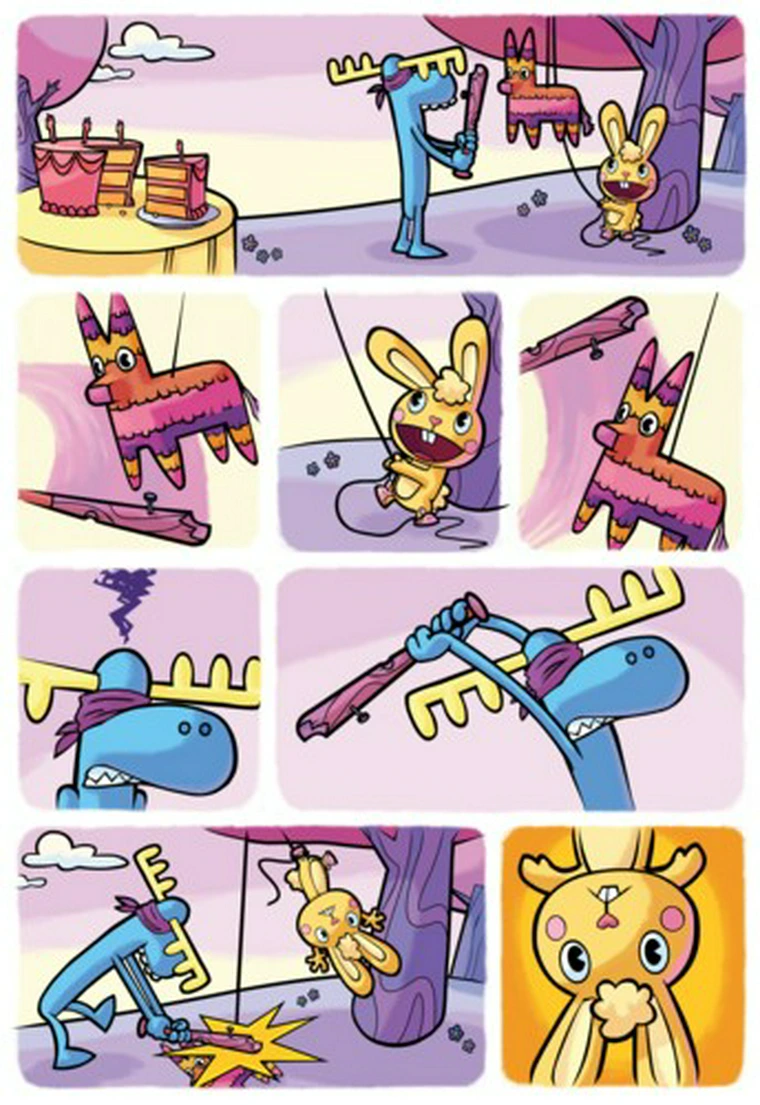
These periods of absence and resurgence demonstrate the show’s resilience, as it continued to engage its audience despite breaks in production. The impact of these hiatuses and returns highlights the enduring appeal of “Happy Tree Friends” and its ability to remain relevant over time.
Crossing Mediums
In a unique crossover in 2023, “Happy Tree Friends” was featured in the downloadable content for the video game “The Crackpet Show.” This collaboration, titled “The Crackpet Show: Happy Tree Friends Edition,” was released alongside a new series episode.
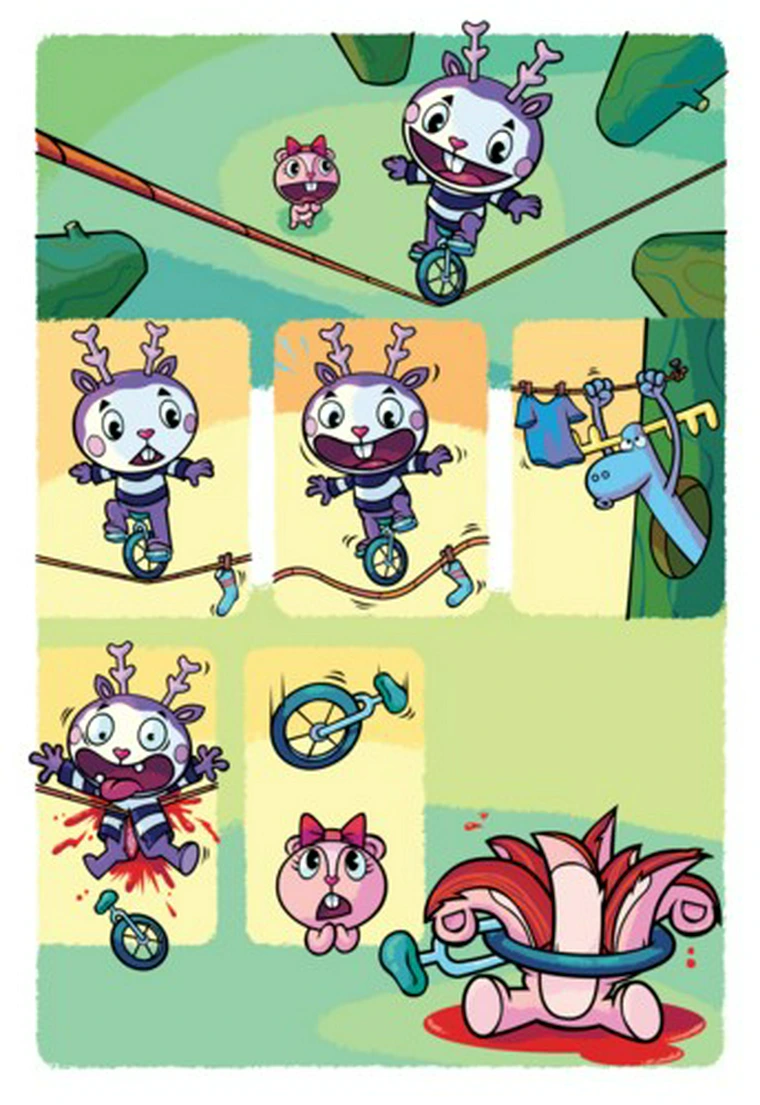
This venture revitalized interest in the series and demonstrated its adaptability and relevance in contemporary media, blending traditional animation with modern gaming culture.
Deceptive Charm
“Happy Tree Friends” masterfully deceives its audience with an appearance akin to a children’s show featuring anthropomorphic, colorful animals in a seemingly innocent world. This façade, however, quickly shatters as each episode spirals into unexpected, extreme violence.
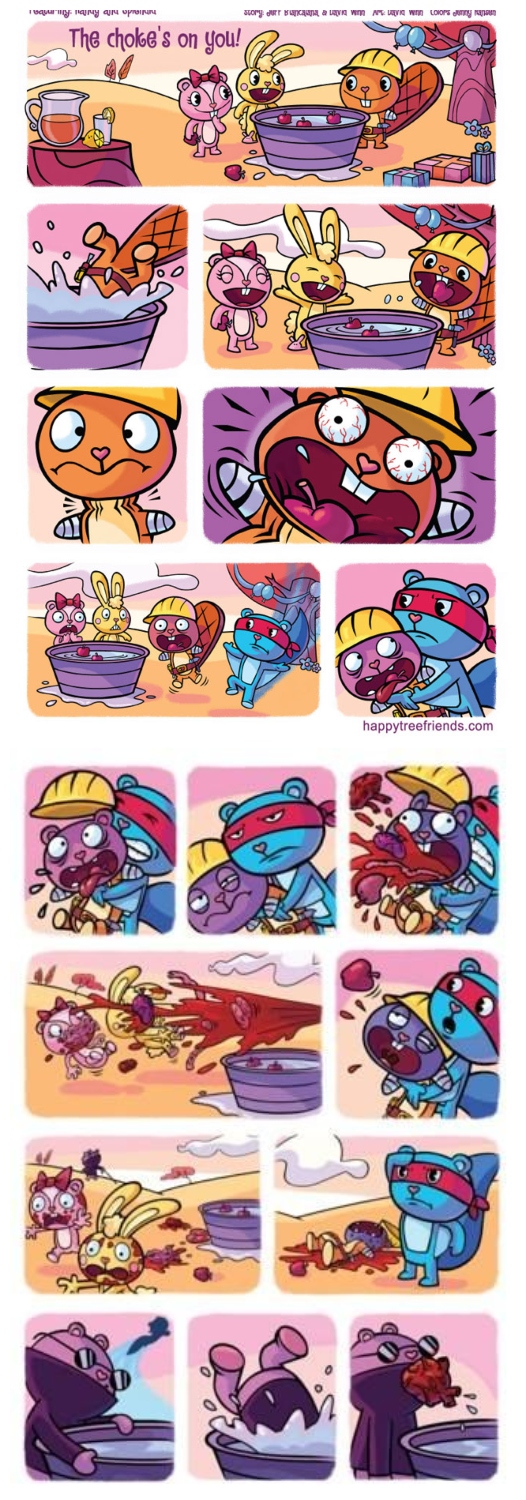
The show’s success lies in this shocking contrast, luring viewers with child-like imagery only to confront them with brutal, graphic content. This dichotomy challenges traditional animation norms, creating a unique niche that has intrigued and shocked its audience.
Classic Structure, Twisted Endings
Each “Happy Tree Friends” episode begins tranquilly, with characters engaging in ordinary activities. This normalcy is abruptly disrupted, often due to an inadvertent action by one of the animals, leading to a chain of catastrophic events.
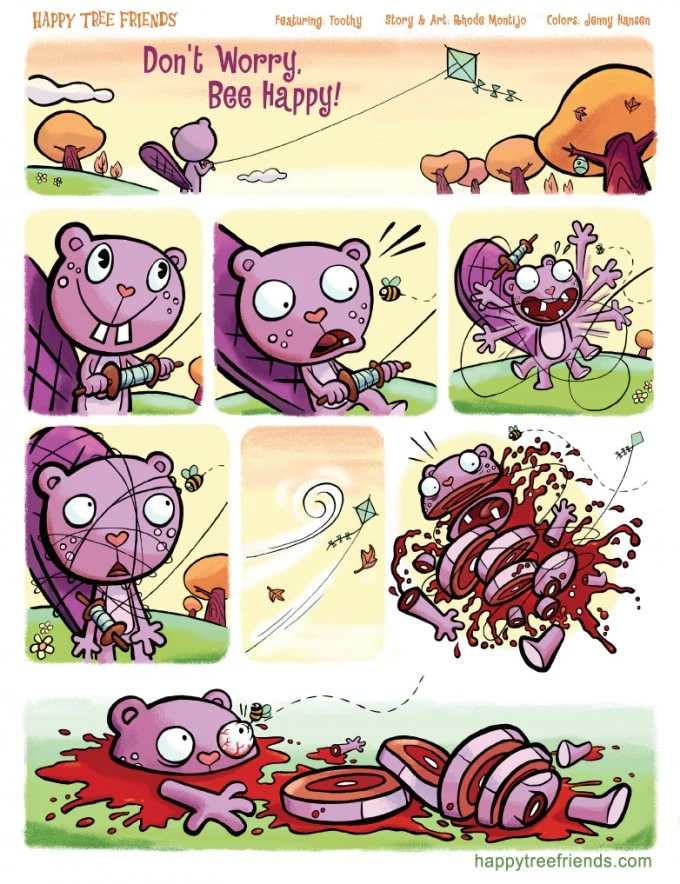
The episodes typically culminate in graphic violence, showcasing the series’ signature blend of cute and gruesome. This predictable yet unpredictable structure has become a hallmark of the show, captivating viewers with its blend of humor and horror.
Character Gallery
The series features diverse characters, each with unique traits and quirks. These include Flippy, the war veteran with a split personality, and Lumpy, the dim-witted moose, among others.
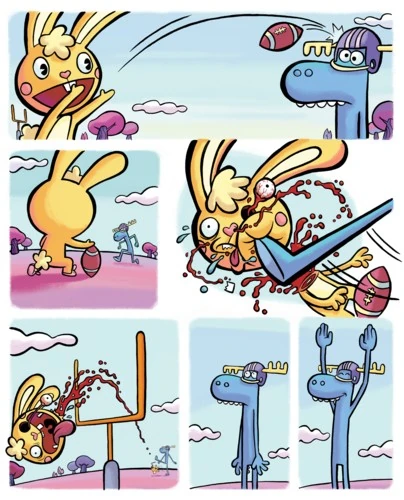
Despite their frequent gruesome demises, characters reappear unscathed in subsequent episodes, maintaining continuity. This revolving door of life and death adds a layer of dark humor and unpredictability, making each character memorable in their own right.
Television Expansion
“Happy Tree Friends” transitioned from web to television in 2006, premiering on G4. This move expanded its audience, bringing the series’ unique blend of violence and humor to a broader viewership.
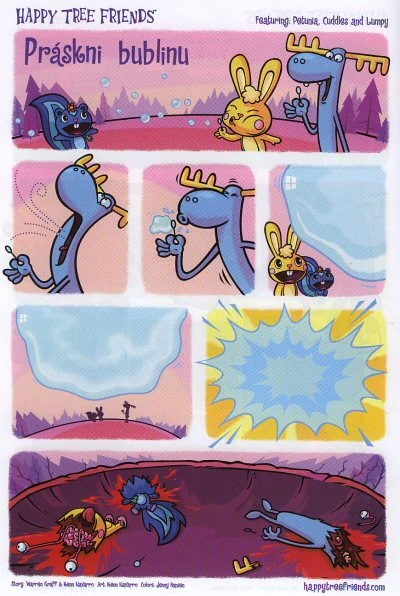
The television adaptation included new episodes alongside those previously released online, offering a more comprehensive experience. This transition marked a significant milestone for the series, demonstrating its versatility and appeal beyond the confines of the internet.
Global Broadcast
The series enjoyed success in the United States and reached international audiences. It was broadcast on various channels across Europe, Latin America, and South Africa, including MTV and Animax.
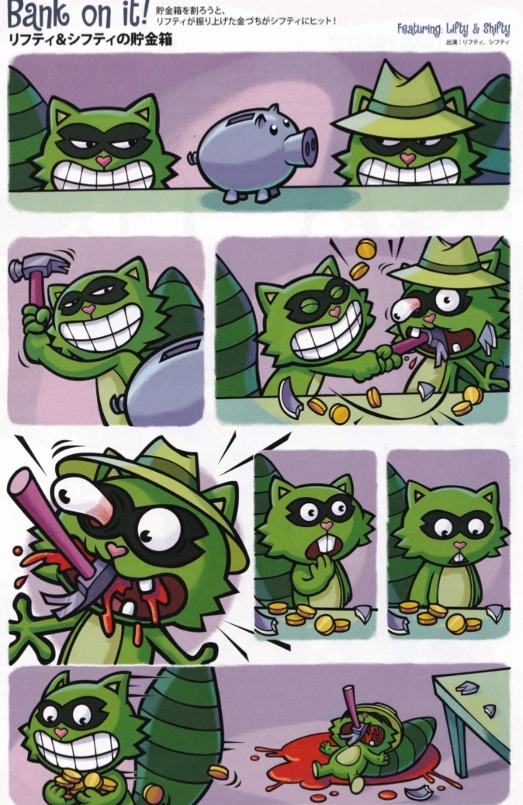
This wide distribution testifies to the universal appeal of its unique blend of humor and horror, transcending cultural and linguistic barriers.
Fan Contributions
User-generated content has significantly enriched the “Happy Tree Friends” community. Fans have expressed their creativity and affection for the series through fan art, stories, and other forms of media. This content has expanded the HTF universe and deepened the engagement of the fan base.
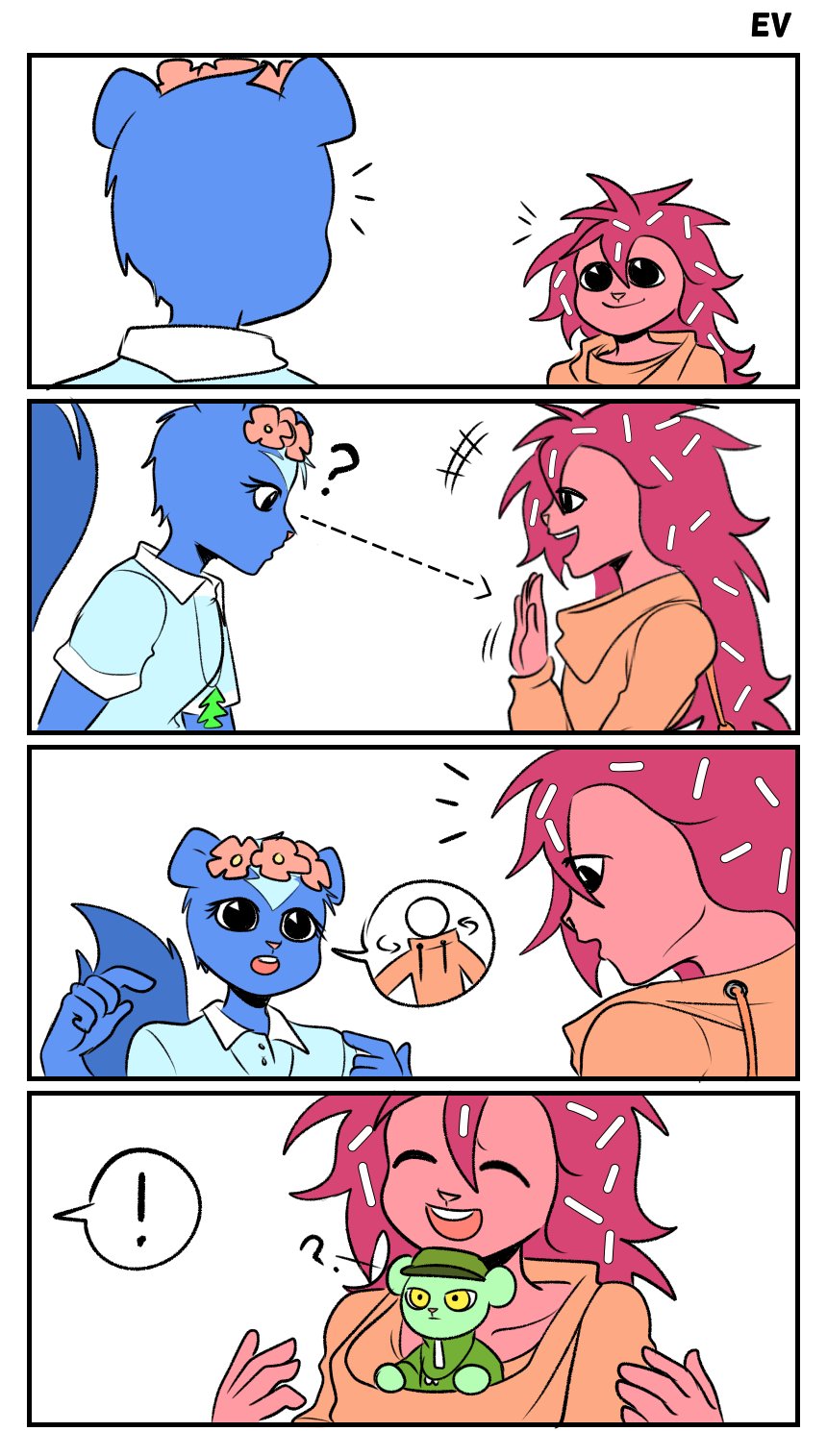
The interaction between the series and its fans through these contributions has fostered a more dynamic and interactive community, demonstrating the significant role of fan involvement in the life and expansion of a series.